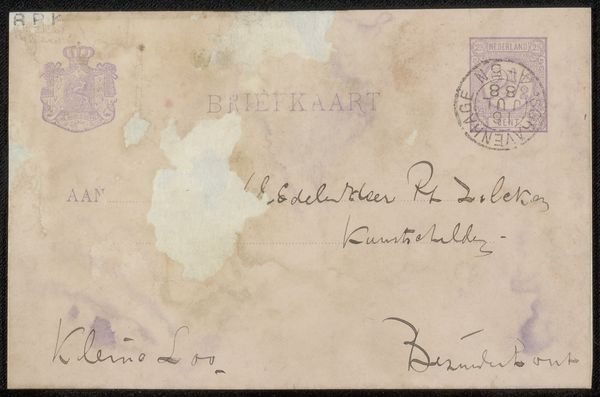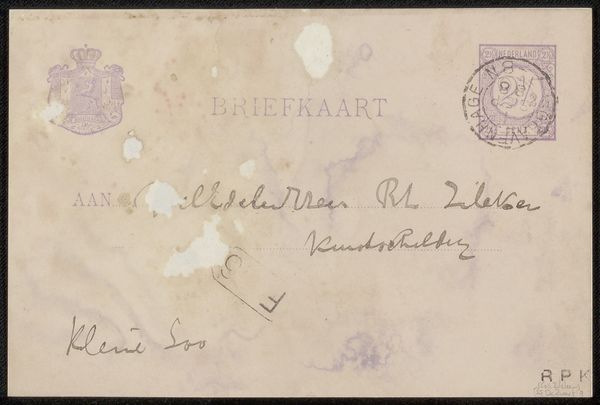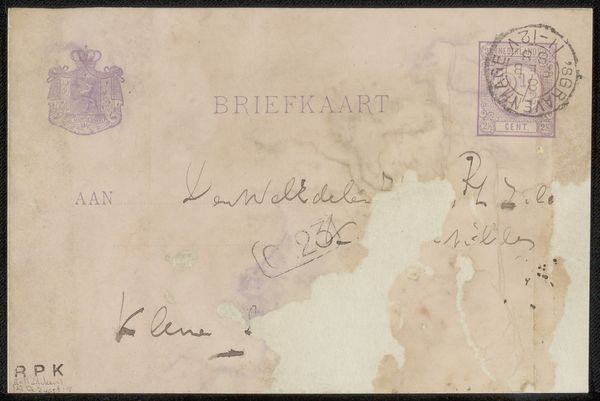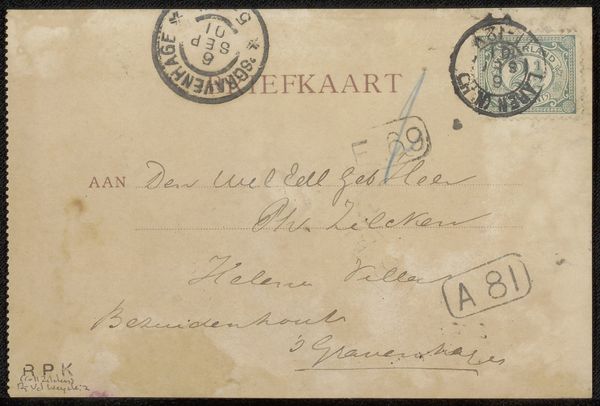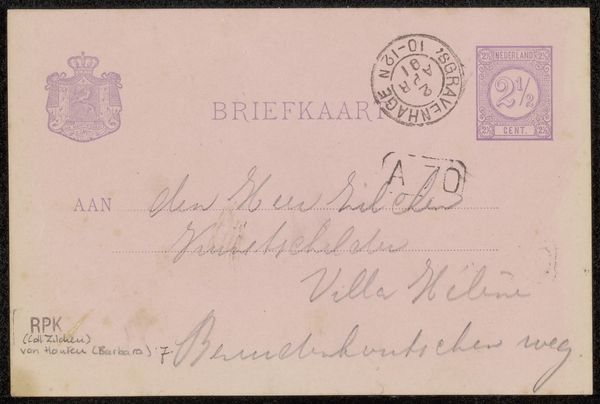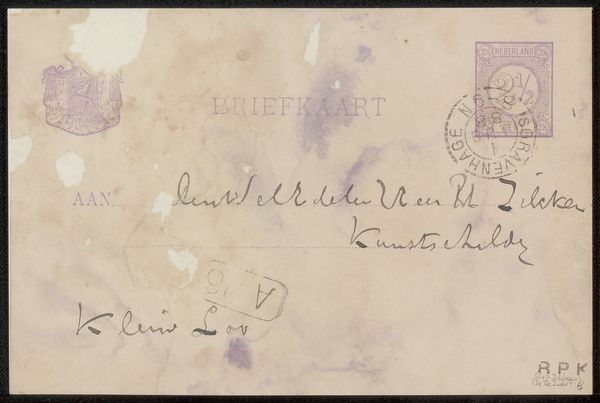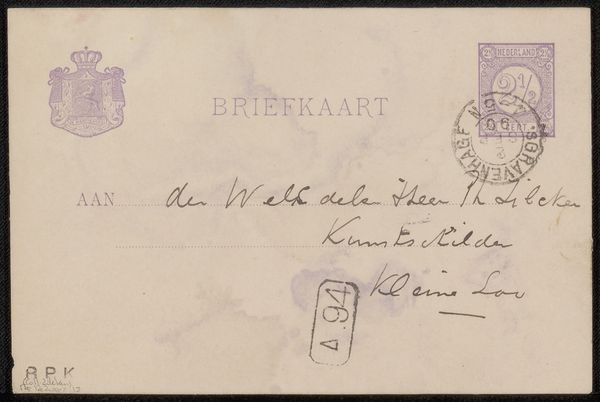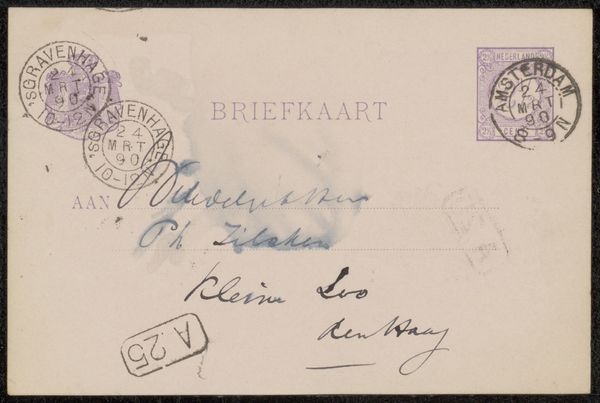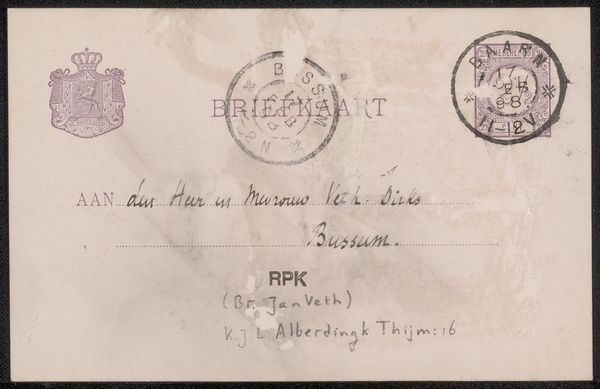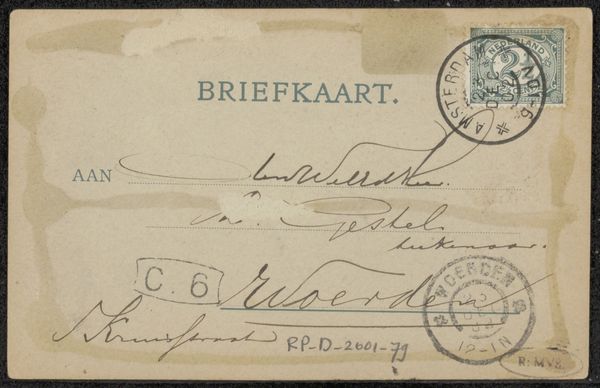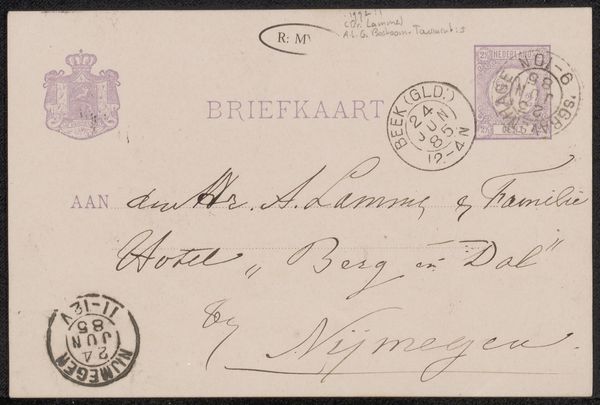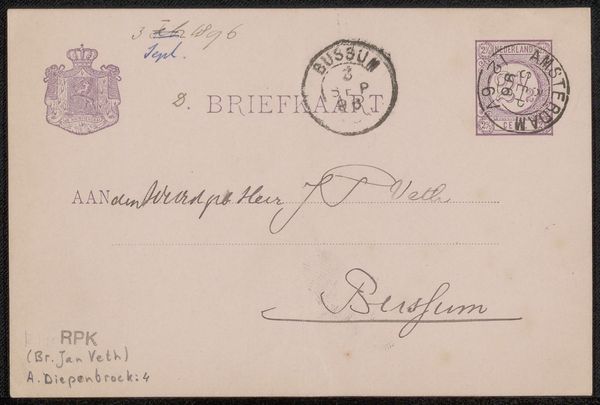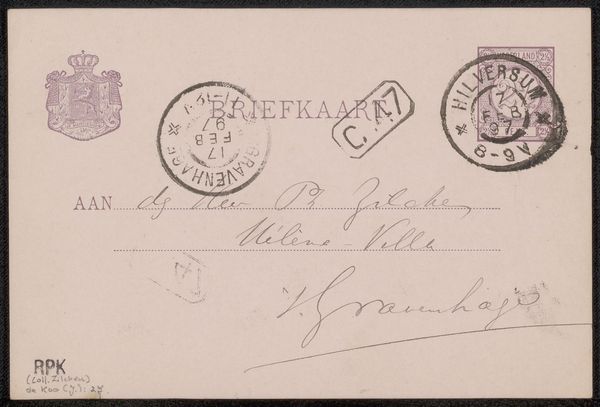
drawing, paper, ink, pen
#
portrait
#
drawing
#
quirky sketch
#
dutch-golden-age
#
pen sketch
#
hand drawn type
#
paper
#
personal sketchbook
#
ink
#
sketchwork
#
ink drawing experimentation
#
pen-ink sketch
#
pen work
#
sketchbook drawing
#
pen
#
post-impressionism
#
sketchbook art
#
calligraphy
Copyright: Rijks Museum: Open Domain
Editor: So, here we have a piece titled "Briefkaart aan Philip Zilcken"– that’s “Postcard to Philip Zilcken”– by Willem de Zwart, dating to before 1888. It’s ink on paper. I'm struck by how personal it feels, like a peek into the artist’s everyday correspondence. What catches your eye in this humble artwork? Curator: The materiality is key here. Look closely at the paper. It’s not just a surface for inscription; it’s a commodity, produced, circulated, and then imbued with meaning through De Zwart’s application of ink. How does the postal system itself become a means of artistic distribution? Editor: That's an interesting way to think about it. I was focused on the handwritten text and the quick sketch aesthetic, kind of like visual notes. Curator: Precisely! The pen and ink weren’t precious tools, but readily available materials, employed swiftly and functionally. Consider the labor involved - not just the artist's hand, but the paper makers, the postal workers… All contribute to the final 'artwork' as a circulating object. How does this democratize artmaking, moving it away from the rarified studio? Editor: So you’re saying that the act of sending a simple postcard elevates a mundane item through its journey and the labor involved? Curator: Yes! And it challenges what we even define as ‘art’ to begin with. It compels us to examine the broader network of production and consumption. Does the postcard's ephemerality enhance or diminish its artistic value? Editor: I see. I guess I hadn't thought about how the postcard exists as part of a larger economic and social system. It's a fascinating way to look at it! Curator: Indeed. Analyzing art through its material origins and circulation patterns opens up new perspectives beyond simply aesthetic appreciation.
Comments
No comments
Be the first to comment and join the conversation on the ultimate creative platform.
